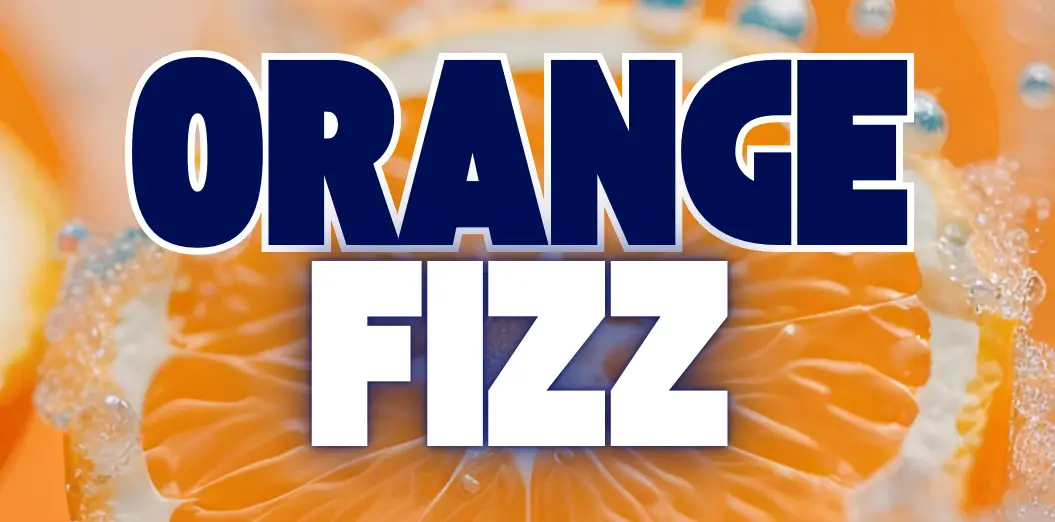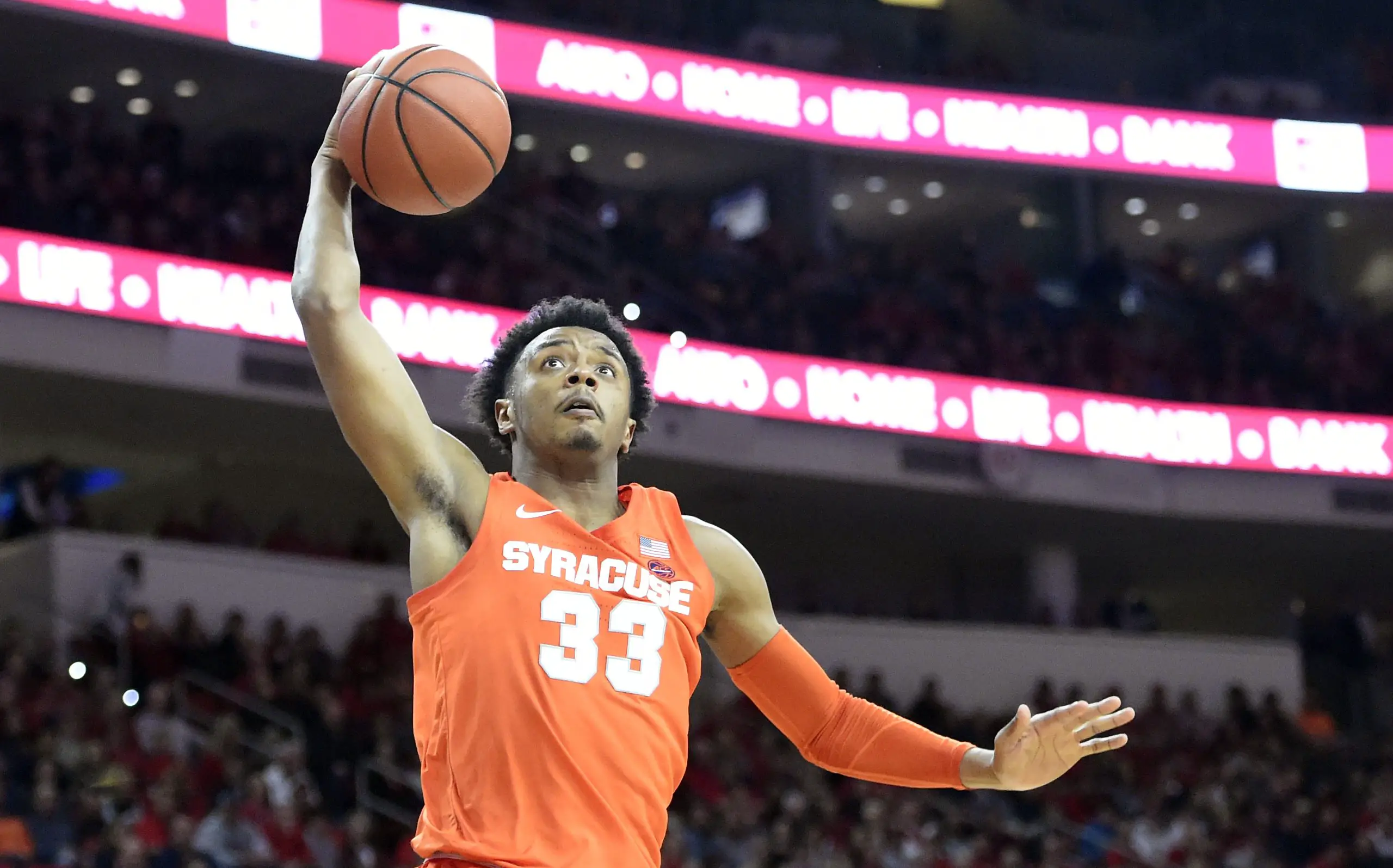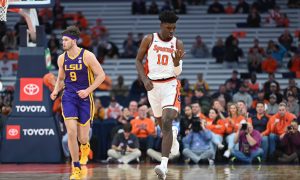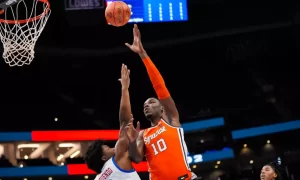Last week, I took a look at players who transferred out of Syracuse, why they did, and their status now. This week, let’s take a look at players who transferred into SU around the time the Orange joined the ACC, and the difference between players who played right away and one’s who had to sit out a year.
From the beginning, let’s start with Michael Gbinije, who started his carer at Duke, transferred to Syracuse, and sat out the 2013 Final Four season. Then, the 6’7 guard/forward had one of the most dramatic improvements in the history of the program, from playing on the wing of the zone to then being the point guard of a final four team, it was drastic.
Gbinije was the first example that it takes time to learn the zone and giant trust from Jim Boeheim. This is not to say that players should have to sit out a year when they transfer, but it certainly helps their development and future goals.
Transferring into Syracuse was relatively quiet after Gbinije, but the first splash for Boeheim was landing 7’2 behemoth Paschal Chukwu. Not in weight, but definitely height. Chukwu missed two seasons because of redshirting and an eye injury, but when he started he was effective.
Plugging a 7’ plus guy in the middle of the zone with a giant wingspan is a huge advantage and a reason why Syracuse’s defense on the 2018 team that went to the Sweet 16 was in the top-10 on kenpom.com. Chukwu averaged at least a block and a half per game in his 2+ seasons playing at Syracuse including over 60 starts.
Chukwu might have frustrated SU fans at times with his lack of hand-eye coordination to catch passes and finish at the rim, but his defensive presence was strong. That ended up helping more than it hurt in the long run. Chukwu was a success at SU.
The third and final, and probably most important transfer to Syracuse who had to sit out in recent memory is Elijah Hughes. A little-known prospect who had a very mediocre season at East Carolina, Hughes was praised for his practices during that 2018 season when he was ineligible to play.
People said he was arguably the best player on the floor, giving star Tyus Battle a run for his money. When he started in Orange the next year, it was still Tyus’ team, but the signs that Hughes had potential were there.
In 2019-20, he took the next step. Hughes became the ACC’s leading scorer and was a 2020 second-round draft pick, the first player to be drafted at SU since Tyler Lydon in 2017. It took time, but that’s how it goes at Syracuse, and what makes players successful under Boeheim.
Compare that to the one-time transfers over the last handful of years. In 2021, Jimmy Boeheim and Cole Swider had good seasons, but nothing to build on. Symir Torrence might have a good senior season, but he’s at best the third guard on a good team.
2020, Alan Griffin. He started almost every game, but by the end of the year was in Boeheim’s dog house and not playing much. He left without much to show for after the 2021 Sweet 16 run. How about a shoutout for Geno Thorpe! The grad transfer from USF played less than 10 games at SU before deciding to head out the door, which was probably a good decision for both sides.
Overall, the overarching theme here is that players need more than one season at SU to have success. It is rare for a player to come in and be effective in year one, and more beneficial to both the player and team to have a 2-3 year career in Orange after transferring in.
This offseason, Boeheim has not brought in anyone, but he would be best suited with a 2-3 year player, one that can learn, develop, and become a leader. That’s how Gbinije, Chukwu, and Hughes did it, and why they got to where they did by the end of their SU careers.
























